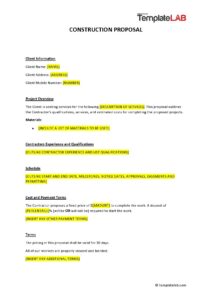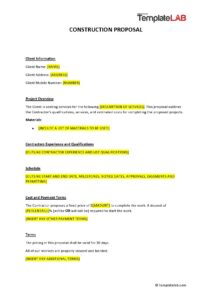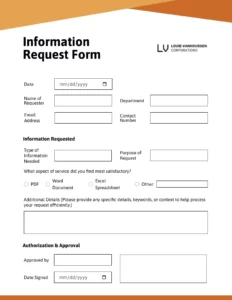Utilizing such a document streamlines the bidding process, saving time and resources for both procuring entities and bidders. It promotes transparency and reduces the risk of misunderstandings, leading to more accurate bids and a higher likelihood of selecting the most suitable supplier. A well-defined structure also helps ensure compliance with relevant regulations and internal policies.
The following sections will delve into the key components of these essential procurement documents, offering practical guidance on their creation and utilization for optimal results.
Key Components of a Formal Procurement Document
Effective procurement relies on well-structured documentation. The following components are crucial for clarity and completeness:
1. Project Overview and Scope: A concise description of the project’s objectives, deliverables, and overall scope. This section provides context and ensures bidders understand the project’s purpose.
2. Specifications and Requirements: Detailed specifications of the required goods, services, or works. This section should be precise and unambiguous, leaving no room for misinterpretation.
3. Submission Instructions: Clear guidelines on how bidders should submit their proposals, including deadlines, formats, and required documentation. This ensures consistency and simplifies the evaluation process.
4. Evaluation Criteria: A transparent description of the criteria used to evaluate bids, including weighting factors for different elements. This promotes fairness and allows bidders to tailor their proposals accordingly.
5. Terms and Conditions: Standard contractual terms and conditions governing the agreement between the procuring entity and the successful bidder. This section protects the interests of both parties.
6. Timeline: A clear schedule outlining key milestones, including tender release, submission deadline, evaluation period, and contract award date. This provides bidders with a clear understanding of the procurement process timeframe.
7. Contact Information: Details of the designated contact person for inquiries and clarifications. This facilitates communication and addresses any questions bidders may have.
Careful attention to these components ensures a robust and transparent procurement process, increasing the likelihood of a successful outcome. Complete and accurate documentation facilitates informed decision-making and contributes to a positive supplier relationship.
How to Create a Request for Tender Template
Creating a robust template ensures consistency and efficiency in procurement processes. A well-structured document facilitates clear communication of requirements and enables effective bid comparison.
1. Define the Project Scope: Begin by clearly articulating the project’s objectives, deliverables, and overall scope. A concise and well-defined scope is fundamental to a successful tender process.
2. Specify Requirements: Detail the specific requirements for goods, services, or works, including technical specifications, quality standards, and performance expectations. Precision minimizes ambiguity and ensures comparable bids.
3. Establish Evaluation Criteria: Determine the criteria for evaluating bids, assigning weighting factors to reflect priorities. Transparency in evaluation criteria promotes fairness and allows bidders to understand the selection process.
4. Develop Submission Instructions: Provide clear instructions on how bidders should submit proposals, including deadlines, required formats, and supporting documentation. Clear instructions streamline the submission process and ensure consistency.
5. Outline Contractual Terms: Include standard contractual terms and conditions that will govern the agreement between the procuring entity and the successful bidder. This protects the interests of both parties and provides a framework for the contractual relationship.
6. Establish a Timeline: Define a clear timeline for the tender process, including key milestones such as tender release, submission deadline, evaluation period, and contract award. A well-defined timeline ensures timely completion of the procurement process.
7. Designate Contact Information: Provide contact details for inquiries and clarifications. A designated contact person facilitates communication and ensures prompt responses to bidder questions.
8. Review and Refine: Before finalization, thoroughly review the template for clarity, completeness, and accuracy. Regular review and refinement ensure the template remains relevant and effective.
A comprehensive template, incorporating these elements, establishes a structured and transparent procurement process. This contributes to effective bid evaluation, informed decision-making, and ultimately, a successful project outcome.
Effective procurement hinges on well-structured documentation. A robust template provides a standardized framework for soliciting and evaluating bids, ensuring transparency, fairness, and efficiency throughout the process. Careful attention to key components, including project scope definition, clear specifications, transparent evaluation criteria, and comprehensive submission instructions, contributes to a streamlined and successful procurement outcome. Utilizing a standardized approach facilitates informed decision-making, mitigates risks, and fosters positive supplier relationships.
Organizations seeking optimal value and efficiency in procurement processes should prioritize the development and implementation of comprehensive templates. Such proactive measures contribute to cost savings, improved supplier selection, and ultimately, the successful delivery of projects and services. Embracing best practices in procurement documentation positions organizations for long-term success in a competitive marketplace.


